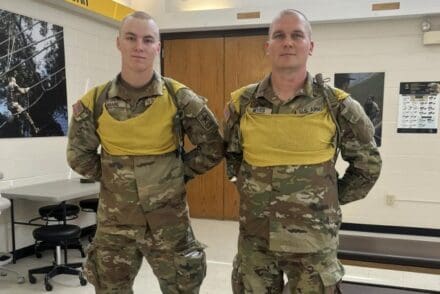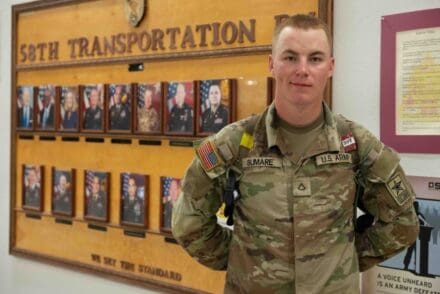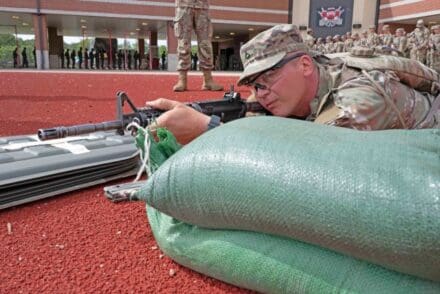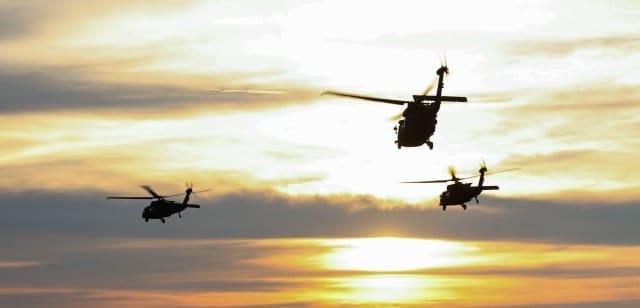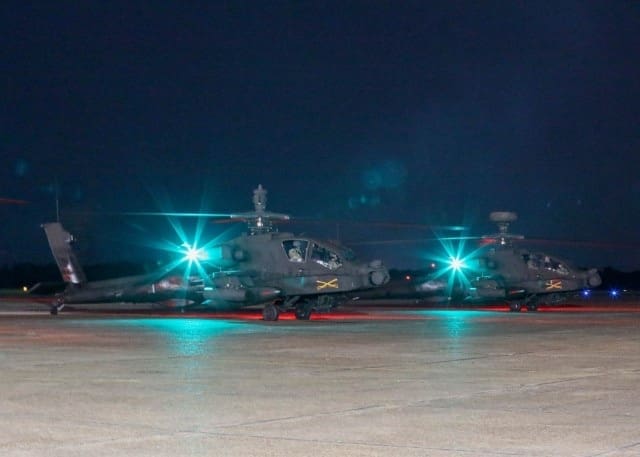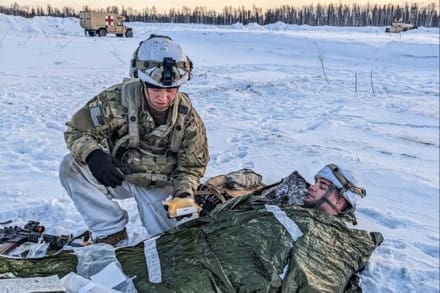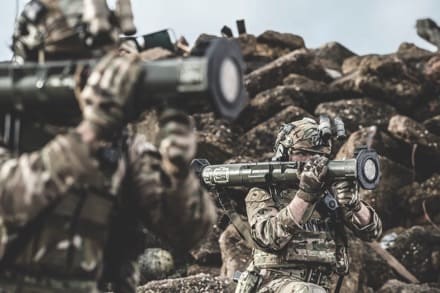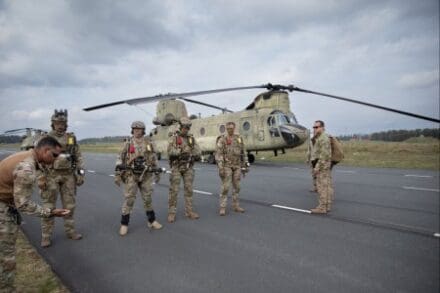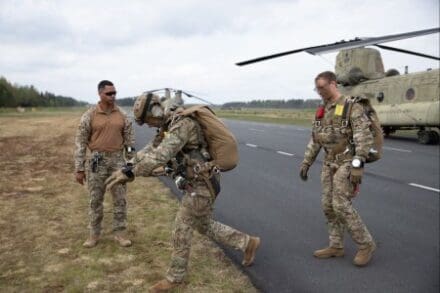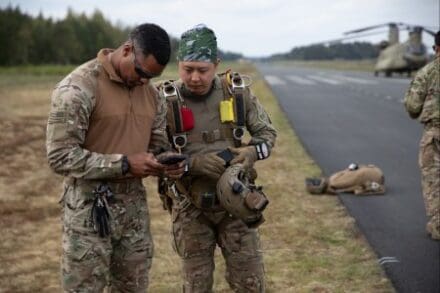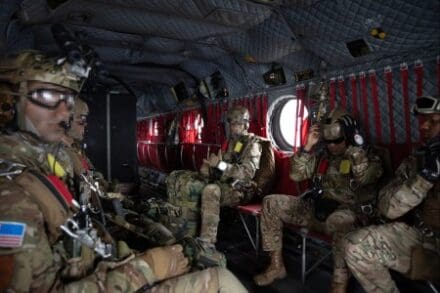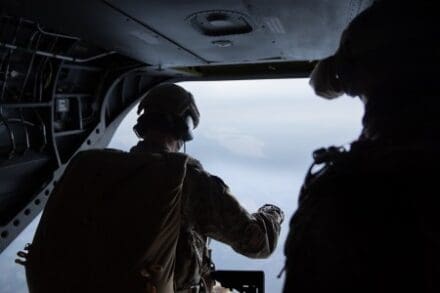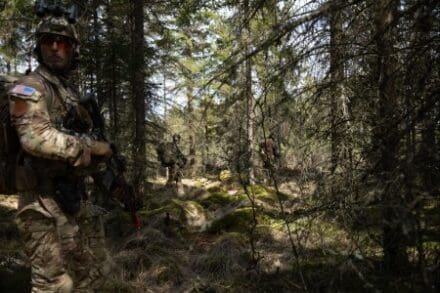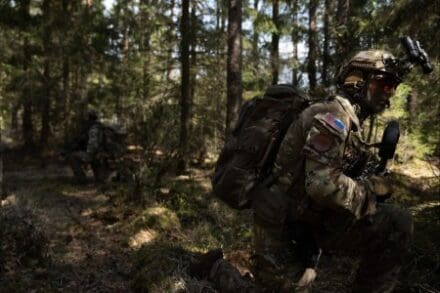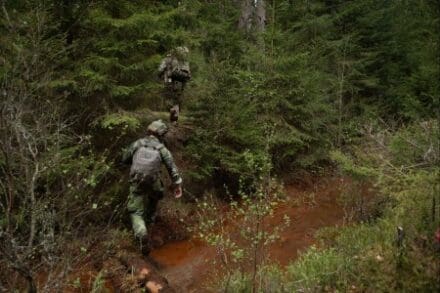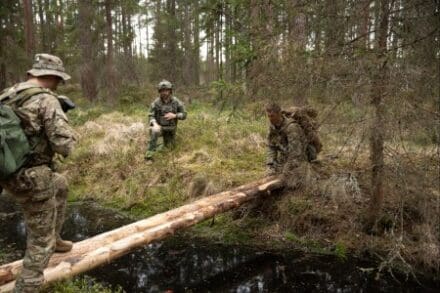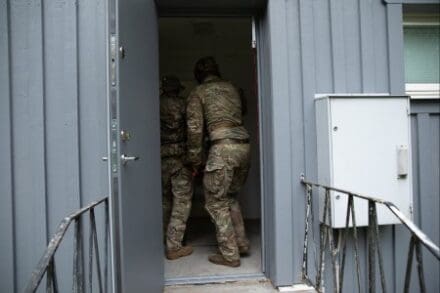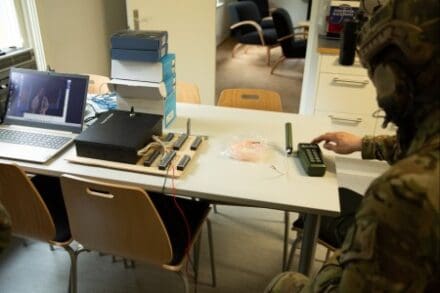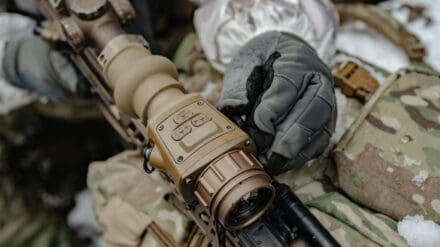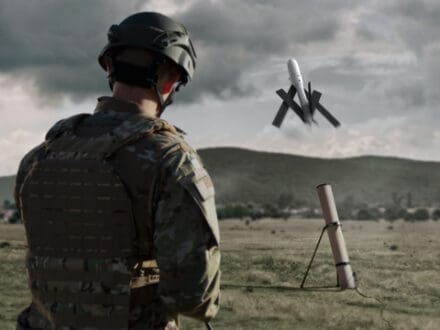FORT LEONARD WOOD, Mo. — When Pfc. Brayden Sumare’s bus pulled into Fort Leonard Wood, nothing could have prepared him for the twist of fate that awaited him just inside the doors of the 43rd Adjutant General Reception Battalion.
The 18 year old graduated from basic combat training at Fort Jackson, South Carolina, in the summer of 2023, between his junior and senior years of high school. He arrived at Fort Leonard Wood in July, to complete his initial entry training.
Sumare, a native of Pine Bluffs, Wyoming, said he arrived at Fort Leonard Wood at about 3 a.m., and there was something oddly familiar about his bay leader, a trainee everybody called “Pops” — he exchanged a few lingering glances with him — but didn’t think much about it.
“The next day, I was laying down in my bunk as the bay leader was walking around getting all the new people’s names for the roster,” Sumare said. “When he got to me, he asked my last name, and I said ‘Sumare.’ And then he asked, ‘Brayden Hunter Sumare?’”
Sumare said he was bewildered and returned the man’s question with another question, “How did you know that?”
According to Sumare, he was “shocked” at the man’s response of — “I’m William Reeves” — his biological father.
Pfc. William Reeves said he will never forget the moment he realized he was looking into the eyes of his biological son.
“It was unbelievable,” Reeves said. “What are the chances we both joined the Army and were at Fort Leonard Wood at the same time for our training?”
Sumare said he thought they didn’t recognize each other because they both looked very different than when they met for the first, and only, time about four years ago.
“When I met him, he had long hair and a full beard. When I saw him at reception, he had a buzzed haircut and was cleanly shaven,” Sumare said.
To add to the unbelievable happenstance, Reeves said he had been nicknamed “Pops” before Sumare even arrived on post.
“I’m almost 40; I have life experience. My peers lean on me for that. They started calling me Pops and it stuck,” Reeves said.
Amanda Sumare, Brayden’s mother, said when Brayden called her to let her know he made it to Fort Leonard Wood and tell her Reeves was also there, she was awestruck, and it took her a minute to wrap her head around the coincidence.
“I was so very shocked. It is the craziest thing ever,” Amanda said.
Reeves, from Poteau, Oklahoma, said he and Brayden’s mother were young when they found out she was pregnant.
“It was unexpected. We did a DNA test when he was born, and he was mine. Our lives had gone in different directions and Brayden’s mother was living in Wyoming, engaged to the man who eventually became Brayden’s adopted father,” Reeves said. “I supported him financially but decided I didn’t want to be too involved and upset Brayden’s solid family unit.”
The two spent several days together at Fort Leonard Wood’s reception battalion, waiting to go to their separate training units.
“Over the next few days, as I watched him interact with other people, I saw familiar mannerisms. It was like looking in a mirror,” Reeves said. “I got to learn a lot from him, and I think that is really cool.”
Since Brayden had already attended BCT and earned the title of Soldier, Reeves said Brayden was able to help the new trainees at the reception battalion prepare for it.
“Brayden taught me how to Ranger roll my uniform. And not just me, he showed us all how. He also showed us what to pack before we left for our units and what to buy from the Exchange when we got a chance. I enjoyed watching him lead others. I am proud of Brayden. He has a bright future,” Reeves said.
According to Brayden, running into his biological father was, “one of those weird life things,” and he was glad he was there to help Reeves prepare for basic training and wish him well.
“I got to tell him goodbye, good luck and give him a hug,” Brayden said. “I think it is awesome that he joined.”
Amanda said she is impressed by both of them and their desire to serve.
“The Army is a good fit for Brayden because he isn’t one to just sit back and watch the world go by. He wants to be involved. He has a strong love and passion for our military and always has. He has so much potential. I am very proud to be his mama,” Amanda said. “I’m also proud of William for stepping up to serve our country. I wish him the best future.”
Brayden is in the middle of six weeks of advanced individual training, with Company C, 58th Transportation Battalion, learning the military occupational specialty of 88M Motor Transport Operator. Reeves is with Company D, 35th Engineer Battalion, for 14 weeks of one station unit training to become a 12C Bridge Crewmember.
“My fingers are crossed I may be able to attend his graduation next month,” Reeves said. “I like to joke — I am going to build the Army’s bridges, and he is going to drive his truck over it.”
By Melissa Buckley, Fort Leonard Wood Public Affairs Office


